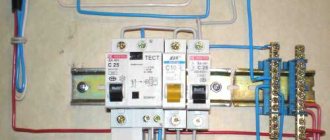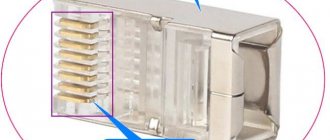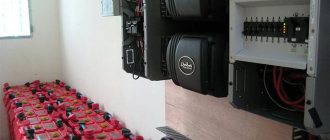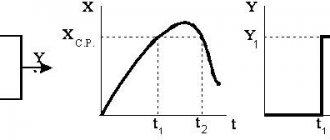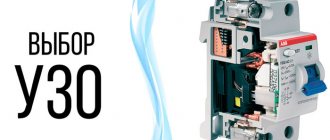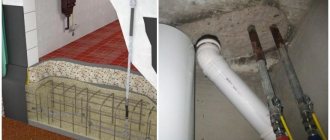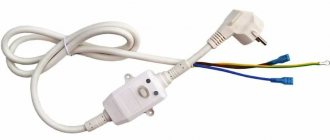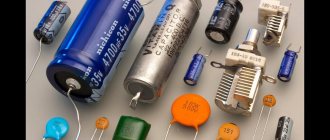Residual current devices have recently come into widespread use due to the increased number of household appliances. But residents do not always want to connect the entire apartment to this equipment due to possible false alarms.
That is why a regular socket with an RCD is popular, into which you can connect only one potentially dangerous device: a washing machine, a shower stall, a dishwasher. You will learn everything about the principle of operation, design features and types of protection devices from our article. Here you will find valuable installation tips.
What is an RCD?
RCD (residual current device)
is a switching device for protecting an electrical circuit from leakage currents. Unlike a circuit breaker, which protects wiring from short circuits and significant overloads, this device only operates when leakage currents occur.
Leaks
in a household electrical network may be associated with human contact with conductive elements (for example, in an electrical appliance, socket) and metal casings of devices exposed to voltage due to damage.
They can also be caused by a violation of the electrical wiring insulation, including due to heating due to incorrectly calculated load and poor-quality installation. Relatively small leakage currents can lead to serious consequences. In the first case, this can cause an electric shock to a person, in the second, it can cause a fire in the wiring. The protective shutdown device, when a leak occurs above the limit set for it, allows you in a split second
and thereby prevent electric shock to a person or avoid a fire. To protect against electric shock, devices are used that are triggered by differential currents (leakage currents) above values of 6, 10, 30 mA:
- For a private house or apartment, choose an RCD with a value of 30 mA
(for groups of sockets or lighting). - RCCBs with differential currents of 6 and 10 mA
are used to protect individual consumers (for example, a washing machine, dishwasher, etc.) and premises with increased danger.
For fire protection in case of possible insulation failures in the electrical wiring, residual current switches with values of 100, 300 and 500 mA are used.
Relevance of electrical sockets with RCD
More than 40% of fires occur due to faulty electrical wiring, and thousands of people a year die at home from electric shock. These sad cases might not have happened if the electrical circuit had been under the control of an RCD - a residual current device.
This device monitors the difference between the zero and phase currents, and if there is a significant difference, it turns off the power supply to the load.
The current threshold for human muscles not to let go of the wire is 10 mA, so the socket with an RCD must ensure a clear determination of its level and triggering of the protection. The automation of the device is designed in such a way that when touching a bare live wire, a person does not even have time to feel the electric shock - the device turns off the power supply almost instantly.
When installing an RCD in a house, you need to be sure that there are no current leaks inside the walls, otherwise the device simply will not turn on.
A breakdown of faulty wiring inside walls can be invisible for a long time and not lead to a fire hazard. But over time, the wire insulation becomes thinner and the current increases, which can cause a fire. The RCD detects the problem long before the cable heats up and disconnects it from the network.
If there is a hidden breakdown of insulation inside the walls, the user’s wallet also suffers. After all, in fact, electricity is spent on heating concrete slabs and plaster. Therefore, installing an RCD is an excellent way to increase the electrical safety of housing and its residents, as well as prevent unnecessary costs for paying for electricity.
Design and operating principle of RCD
Let's look at the device and principle of operation of the RCD. The main working element of the device is a built-in differential transformer
, which compares the current value in the conductor towards the load with the value returned to the network. In the normal state, these values are equal and the total magnetic flux through the transformer magnetic circuit is zero. When a person touches the current-carrying parts of the circuit, part of the current will flow through his body to the ground and the current returned to the network through the neutral conductor will be less than that entering through the phase conductor. As a result of this, the total magnetic flux, no longer equal to zero, induces a differential current in the secondary winding of the transformer, leading to the operation of the relay and, thus, disconnecting the main contact group of the RCD. The same thing happens when there is a leak to ground as a result of poor wiring insulation. In addition to the differential transformer, the RCD contains a control magnetoelectric relay, a solenoid for controlling the main contacts and diagnostic elements.
Design features
According to the principle of operation and construction, RCDs and sockets with protective de-energization are almost identical. The main element of the product is a measuring transformer, with the help of which the difference in currents on the neutral and phase wires is calculated.
Thus, after switching the washing machine or water heater through a socket with an RCD, power will be supplied to the equipment provided that the current difference does not exceed a specified threshold value. This parameter is usually called differential current (hence the name “differential machines”). It is indicated in the product passport and on the socket body.
Marking, main characteristics of RCD
In order not to confuse RCDs with other similar devices (circuit breakers and automatic circuit breakers), let us dwell on their markings. In addition, knowledge of the markings will help you choose and connect the RCD correctly. The RCD marking contains a connection diagram and the main selection parameters: rated current (A), differential current (mA), operating voltage (V), conditional limit short-circuit current (A). The table provides a more detailed description of the main characteristics of the RCD and other designations that manufacturers may provide in the technical documentation.
| Name | Decoding |
| Un, V | Rated voltage (electronic RCDs are very sensitive to voltage surges) |
| In, A | Rated load current (maximum current that the RCD can pass for a long time without harm to the device) |
| fn, Hz | Rated network frequency |
| I∆n, mA | Rated residual current or sensitivity, setting by leakage current (leakage current at which the RCD is triggered) |
| I∆no, mA | Rated non-tripping differential current (at which the RCD should not trip). Formula IΔn0 = 0.5 IΔn. |
| Im, A | Rated switching capacity. Formula Im = 10 In |
| I∆m, A | Rated making and breaking capacity for differential current |
| Inc, A | Rated conditional short-circuit current (resistance to short-circuit currents) |
| I∆c, A | Rated differential short-circuit current |
| Tn, ms | Tripping time at rated differential current |
| N | The neutral conductor is designated by the letter N (neutral). |
| Indicator | Contact position indicator - shows whether the RCD was turned off manually or whether it was triggered by a leak. |
Home circuit breaker device
- A toroidal core made from a specific grade of ferrite.
- Two primary coils (in a single-phase RCD), made of copper wire with a cross-section not lower than the rated load current.
- One secondary coil of thinner wire with more turns.
- An actuator designed to disconnect power contacts in the event of a current leak to the ground.
- A test button with resistance, necessary to check the RCD for operability, when pressed, the currents in the phase and neutral coils change, which leads to the tripping mechanism, the current amplifier (in an RCD with electronic control).
- Device body.
Operating principle of RCD without grounding
By and large, it does not need a grounding conductor to operate, since a phase and a working zero are used. These two conductors pass through a kind of current transformer with a control winding.
These tiny changes are recorded by the control coil and transmitted to the relay, which in turn activates the release mechanism and disconnects the line from the power supply.
Expert opinion
It-Technology, Electrical power and electronics specialist
Ask questions to the “Specialist for modernization of energy generation systems”
How does an RCD differ from a machine: main features, installation and connection Provides protection against leakage on both alternating and pulsed current modern TVs, power supplies, computers, etc. Ask, I’m in touch!
Types of RCD, varieties
There is a fairly large selection of models of residual current devices with different technical characteristics. To navigate their diversity, and to understand which device is best suited for a particular situation, let’s consider the main types of RCDs. By design, RCDs can be electromechanical or electronic:
- Electronic ones
have an amplifier in the circuit that requires power supply. If the zero at the input burns out, the amplifier remains without power and the device will not respond to a possible leak; - Electromechanical ones
(devoid of this drawback) are usually more reliable, but more expensive.
Based on the type of current leakage,
there are three types of RCDs.
The difference between the devices is shown in the image below. Residual current devices also differ in their short-circuit current limit
(usually 4.5 kA, 6 kA or 10 kA). There is a classification based on reaction speed, response speed:
- conventional without time delay, general use - G (in the range of 20-40 ms),
- selective RCD type S - with time delay (in the range of 150-500 ms)
Based on the number of connected poles, models are divided into two-pole and four-pole. Let us remind you that the residual current device does not protect
load circuits from short circuit overcurrents and overloads, because Circuit breakers and differential circuit breakers are designed for this purpose.
Advantages and disadvantages
To begin with, we list the main advantages of sockets with a built-in protective de-energization device:
- The most simple and labor-intensive installation. There is no need to make changes to your home's electrical wiring.
- After technically correct installation of one protective product, safety increases during the operation of several household appliances connected to the sockets of this loop.
- After the automation is triggered, it will be possible to determine which equipment has damaged electrical insulation.
- To check the serviceability of the protective automation, just use the built-in diagnostic function by clicking on the “Test” button.
The main disadvantages of the equipment are the following:
- Installation of most sockets with RCDs requires the placement of deep boxes.
- Removing the outlet box can lead to destruction of the wall cladding in the place where the outlet is installed.
- High cost of quality products. The difference is especially clearly visible when purchasing a socket with an RCD and a protection class of at least IP.
What is the difference between an RCD and a difavtomat?
An RCD
is a device that breaks the circuit when a leakage current occurs.
A difavtomat
is a combined device that protects the network from overload current and a person from leakage current.
Thus, in simple words, an RCD differs from a difavtomat in that it is a more highly specialized device and does not protect the network from short circuits and overloads. In order to visually
distinguish an RCD from a difavtomat, it is necessary to pay attention to the housing of the devices - if on the designation there is a letter in front of the current rating indicating the response characteristic of the circuit breaker (for example, B or C), then this is a difavtomat. If there is no letter before the denomination, then it is an RCD. It is important to remember that due to the fact that the RCD does not provide protection against short-circuit currents and overloads, this device must be used as additional protection when installing a circuit breaker is mandatory.
Features of choosing an RCD connected to a water heater
In domestic conditions, storage and instantaneous electric water heaters are used. Using the device, along with a machine, protects equipment from current leakage or fire. An RCD for a water heater is installed directly in front of the device itself, and the electrical energy that powers the equipment passes through it. In cases of current leakage, the device senses the changes and automatically turns off the power system. For this purpose, the device is equipped with special sensors and switches.
According to safety requirements, the RCD installed on the water heater must be supplemented with grounding. Also, to protect equipment from overloads or short circuits, boilers are additionally equipped with automatic switches.
RCD and difavtomat for additional protection of equipment Source strbuild.ru
How to choose an RCD?
In order to correctly select the RCD, it is necessary to ensure that the selected current rating of the device
is one step higher than the current rating of the corresponding group circuit breaker.
The rating of the input RCD must be higher than or equal to the rating of the input circuit breaker. In this case, this device will be protected by the machine from short circuit currents. The differential current rating, to protect a person from electric shock, is usually selected at 30 mA
. For rooms with increased danger - 6 or 10 mA (the same value of the differential current is selected when the protection is for one device). An RCD with a differential current value of 100 or 300 mA is installed, if necessary, after the input circuit breaker. But it protects not from electric shock, but from fire (it is often called “firefighter”). You can pre-select the RCD using the selection table, taking into account the load power and differential current. It is important to take into account the recommendations given above.
How to find the area where there is a leak
In order to find out the reason why the RCD knocks out, you should take the following steps:
- Carefully check that the connection is correct . Installation errors are the main reasons for automatic operation.
- To check each area or electrical appliance, you should turn off the circuit breakers and protection on each line : kitchen, bathroom, lighting, appliances.
- When the machines are running, it is necessary to enable leakage protection . If the RCD trips while the product is running, it means there is a malfunction in the mechanism. If automatic protection does not work, then the following mechanisms should be checked.
- To check the integrity of the electrical wiring, it is necessary to disconnect all electrical appliances in the house from the power supply and turn on the input circuit breaker and connect the electricity . If the RCD trips, then the problem is in the wiring. If everything works as usual, then the reason is technical.
If there is a leak in the electrical wiring, then it is necessary to check the entire system Source m.yukle.mobi
Connecting an RCD to a single-phase network (with and without grounding)
Users often ask the question, should they install an RCD before or after the machine? To do this, consider the most common scheme for connecting one RCD and several group circuit breakers in a single-phase network. In the correct connection diagram,
the RCD is installed after the input circuit breaker.
The connection sequence is as follows: input machine - meter - RCD. The diagram shows one RCD, but there can be several of them (in turn with one or more group circuit breakers). This may be necessary if you plan to protect a specific group of consumers separately. For example, you have a separate line to a washing machine, and you want to install an RCD for it with a differential current of 10 mA and a separate circuit breaker. In a group, an RCD is first installed, and then a circuit breaker (or several circuit breakers). Above was a diagram of a single-phase network with grounding (TN-S diagram). In older houses, the TN-C (two-wire) power supply circuit is still used. In such a network, the PEN wire combines the functions of a working neutral and a protective conductor. In a two-wire network without grounding, the RCD also protects against electric shock, but it is triggered not when current enters the current-carrying body of a home appliance, but later, when a person touches the body that has become energized. From the figure below it can be seen that there are practically no changes in the inclusion of the RCD itself in such a circuit. It is only important to remember one point: if you have a three-wire cable running from consumers (electrical appliances, lighting) into the switchboard, the grounding wire in the switchboard must be left unconnected, and the phase and neutral conductors must be connected as indicated in the diagram. How many machines
can be connected to one RCD? The number of group circuit breakers connected after the RCD depends on their total current rating (which in general should not exceed the current rating of the RCD) and the total leakage current of the protected network. There are current leaks in any working network, the main thing is that they do not exceed the established standards. An increase in leakage currents may be a consequence of insulation aging, damage, or malfunction of electrical appliances. The total value of the leakage current of the protected section of the network in normal operation according to regulatory documents should not exceed 1/3 of the rated current of the RCD, i.e. for RCD 30mA should not exceed 10mA. If there is no real data on leakage in the network, then calculated values are taken: for consumers (electrical appliances) 0.4 mA per 1 A of load current + leakage current of the wiring itself - at the rate of 10 μA per 1 m of conductor length. Exceeding the total network leakage current above the threshold value of the RCD can lead to false alarms. In turn, this signals that most likely it is necessary to install an additional RCD (especially if you have more than two or three machines after the RCD and preliminary calculations/measurements of the leakage current have not been carried out). The excess of the total value of the ratings of group circuit breakers over the rating of the RCD current is not critical if it also exceeds the rating of the input circuit breaker. If the rating of the RCD is selected correctly (that is, higher than the rating of the input machine), then the RCD will be protected in this case by the input machine.
Troubleshooting
By checking each individual device, you can find out which of them has a malfunction. When connecting faulty equipment to the RCD, the protection will automatically operate. The most common problems occur in the operation of washing machines, electric ovens and water heaters. To solve this problem, you should not open the equipment yourself. To fix the problem, you should contact a service center or call a specialist to your home.
If the problem is in the old electrical wiring, then it often has to be changed completely. If the lines were laid recently, then it is worth looking for errors in connections, connecting wires or weak machines. It is necessary to inspect distribution boxes and sockets. If the automation is triggered when the lighting is turned on, the reason may be in the lighting device itself. Also, do not neglect checking the cable along the entire line. If there is open wiring in the room, this makes the task easier. To diagnose closed wiring, you should use a special device. It helps to find the location of the cable break.
For a number of reasons, we had to do open wiring in the office. I was really happy about it when the time came to expand - it turned out that machines and additional lines could be added without any problems.
Alexei
Clamps for measuring current leakage Source test-energy.ru
Finding out the reasons for the operation of the RCD is a long and troublesome process that requires a lot of time and patience.
Connection to a three-phase network (with and without grounding)
Connecting an RCD in a three-phase network with grounding is not much different from a single-phase one. Protection of three-phase load circuits is carried out by a three-phase (four-pole RCD). In this case, single-phase load circuits must be protected with a separate single-phase (two-pole) RCD. There are many schemes on the Internet where a three-pole RCD is used simultaneously to protect both three-phase and single-phase consumers. This is only permissible if the RCD is fireproof, with a leakage current of 100 mA or more. Connecting an RCD in a three-phase network without grounding is prohibited by the PUE.
What function do residual current devices perform?
Its use can save you from electric shock, prevent fire if the contacts are not of very good quality, the insulation is damaged, or there are other problems in the wiring. For this reason, there is no need to ignore the installation of an RCD.
Differential current switches (VDT) are those machines that are placed in front of the RCD, in accordance with GOST 51326.1-99. In England - RCCD's, in France - ID.
RCD connection errors
The most common RCD connection errors are related to incorrect connection of the neutral conductor. One of the most common
connection errors is connecting the neutral conductor from the output of the RCD to the common neutral bus. Moreover, it is incorrect to either directly connect any group of sockets (protected by an RCD) to the common shield neutral conductor bus, or to combine the common neutral bus with the N bus after the RCD (intended for the neutral conductors of protected load groups). Another error is related to the connection of neutral conductors of different consumer groups. The neutral conductor after the RCD must be connected directly to the load of the groups powered through it, without connecting to the neutral conductors of groups not protected by the RCD or protected by another RCD. Also, you cannot combine the neutral conductor after the RCD with the protective grounding conductor (that is, combine the working and protective zero).
Possible design options
In the combination of a socket and an RCD, both devices are equivalent. It is difficult to determine the main role of any of them. Therefore, externally they can look like a socket with an RCD or an RCD with a socket.
The protective adapter is attractive due to its low price and ease of use. It can always be moved to another room to connect the desired device
The design of these devices can be as follows:
- module built into a socket box;
- monoblock adapter inserted into a simple socket;
- module mounted on a DIN rail.
In fact, these devices are two independent devices connected within one design. Their functionality is the same, so the main selection criterion is the convenience of one or another model in a particular situation.
How to check the RCD for functionality?
You can check the performance of the RCD in the 4 most well-known ways:
- Using the TEST button
- Battery test
- Using an incandescent light bulb
- Checking with a tester
The most popular are the first two methods, which require less effort and available means.
- To check the residual current device, just press the “Test” button (all these devices are equipped with this button). When pressed, a resistance is connected inside the circuit, simulating leakage current. In this case, a working device disconnects the load circuit.
- Take a regular AA battery and connect two pre-prepared wires to it, preferably of different colors. Cock the lever of the device and touch the free ends of the wires to both terminals of any of the poles (either phase or neutral). Then reverse the polarity. A working RCD should trip when at least one polarity is connected (type A RCD should trip with any polarity, type AC - only with one).
An important point: you can use a battery to check an electromechanical RCD; an electronic RCD will not work in any polarity, since for its operation you need to specially supply power. Dear users, thank you for reading this article to the end! We would like to remind you that in our online store you will find a wide selection of various protection devices: RCDs, differential circuit breakers and overcurrent circuit breakers. We are always ready to offer low prices, convenient delivery and a quality guarantee!
Leakage current and general protection circuit
For an apartment with TN-CS wiring, it would not be a mistake to take an RCD for 30 mA unbalance without further thought. A separate section will be devoted to the TN-C apartment system, but for private houses it is impossible to immediately give clear and definitive recommendations.
According to clause 7.1.83 of the PUE, the operating (natural) leakage current should not exceed 1/3 of the RCD unbalance current. But in a house with an electric heated floor in the hallway, courtyard lighting and electric heating of the garage in winter, the operating leakage current can reach 20-25 mA with a living area of 60 and 300 square meters.
In general, if there is no greenhouse with electrically heated soil, a heated water well, and the yard is illuminated by housekeepers, at the input after the meter it is often enough to install a fire RCD with a rated current one step higher than the cut-off current of the machine, and for each group of consumers - a protective RCD with the same rated current. But an accurate calculation can only be made by a specialist based on the results of electrical measurements of finished wiring.
Calculation examples
Let's look at how to calculate an RCD using examples for different cases.
The first is a new apartment with TN-CS wiring ; According to the data sheet, the power consumption limit is 6 kW (30 A) . We check the machine - it is at 40 A, everything is OK. We take the RCD a step or two higher in rated current - 50 or 63 A, it doesn’t matter - and for an unbalance current of 30 mA. We don’t think about the leakage current: the builders must provide it within normal limits, but if not, let them fix it themselves for free. However, contractors do not allow such mistakes - they know what replacing electrical wiring under warranty smells like.
Second. Khrushchevka, 16 A plugs. We install a 3 kW washing machine; current consumption is about 15 A. To protect it (and protect against it) you need an RCD with a rating of 20 or 25 A for 30 mA imbalance, but 20 A RCDs are rarely on sale. We take a 25 A RCD, but in any case, it is MANDATORY to remove the plugs and install a 32 A machine instead, otherwise the situation described at the beginning is possible. If the wiring clearly cannot withstand a short-term surge of 32 A, nothing can be done, you need to change it.
In any case, you need to submit an application to the energy service to replace the meter and reconstruct the electrical wiring, with or without replacement. This procedure is not very complicated and troublesome, and a new meter with an indication of the wiring status will serve you well in the future, see the section on errors and malfunctions. And the RCD registered during reconstruction will then allow you to call electricians for free for measurements, which is also very good for the future.
Third. A cottage with a consumption limit of 10 kW, which gives 50 A. The total leakage according to the measurement results is 22 mA, with the house giving 2 mA, the garage - 7, and the yard - 13. We set the general difavtomat to 63 A cutoff and 100 mA imbalance, house with the garage we power it separately through an RCD for 80 A nominal and 30 mA unbalance. In this case, it is better to leave the yard without its own RCD, but take the lamps for it in waterproof cases with a grounding terminal (industrial type), and connect their grounds directly to the ground loop, this will be more reliable.
